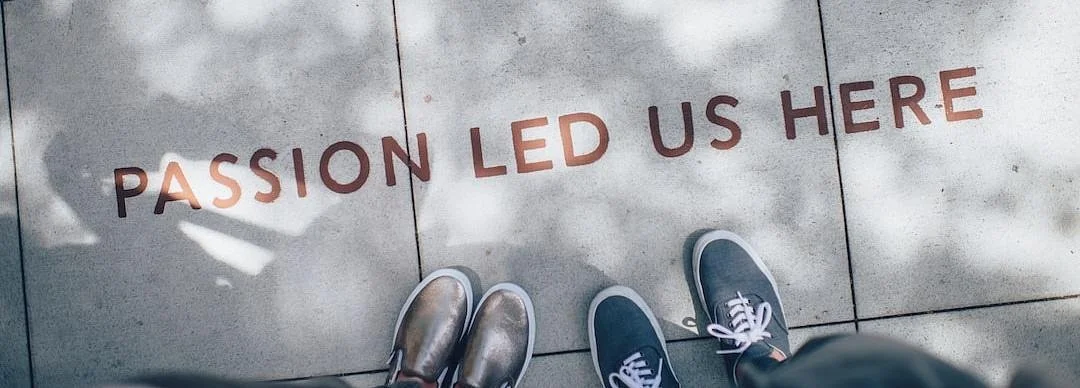Ou Ning’s Bishan Project (2011-2016) as a Case Study of Antagonism in China’s Social Practice
By
Dot Jia
Image description: logo of Bishan Commune, computer rendered in bright yellow, green and black. The words ‘Bishan Commune’ are visible in English and Chinese characters. At the centre of a laurel wreath, there is an image of a cow standing in a field which is flanked by an electricity pylon and traditional building. There are also graphics of an open book and a sheaf of wheat. Image credit: Ou Ning
Published in September 2021 as part of the extended digital edition of Social Works? Open journal…
“Bishan is a remote village located in the foothills of the Huang Mountains in Yi County, Anhui Province in East China. [1] With ceramic roof tiles above white perimeter walls and a stone-paved road covered with green moss, it is a typical Hui-style village, like countless others dotted around the scenic mountain ranges. Yet with a closer look, Bishan Village is nothing like the average Chinese countryside village. The village plays host to a contemporary art space, an avant-garde bookstore, and many international tourists.”
Image description: colour photograph, exterior. A sunny street scene in Bishan Village. Two people walk down a narrow street, flanked by buildings. One of the people carries a basket. In the background we can see mountains and a blue sky. Photo credit: Sun Yunfan.
Bishan Village is home to Bishan Commune, a rural reconstruction and community practice that lasted for six years (2011-2016). Initiated by artist Ou Ning (b. 1969) and curator Zuo Jing (b. 1970), the goal was to host various forms of community activities and use art to explore new possibilities for rural reconstruction (in Ou Ning’s very own words, ‘to build a utopia’). [2] The plan was highly anticipated and attracted wide attention beyond the art world, both in China and abroad.
In 2014, the Sociology Department at Nanjing University organised a field trip to Bishan Village for their summer international programme “China Studies” where they met Ou Ning and stayed in the village for a week. Among the visiting students was Zhou Yun, a PhD student in Sociology at Harvard University. Soon after the expedition, Zhou Yun published an open critique on the Chinese microblogging platform Weibo, titled Whose Countryside, Whose Commune? — Taste, Distinction, and Bishan Project. [3] In her criticism, she referred to her encounters during her stay at Bishan Village:
During Ou Ning’s welcoming speech, the slideshow he prepared was entirely in English and filled with jargon like ‘civil society’, ‘social engineering’, ‘party politics’, etc. He kept quoting Western literature and thinkers including Walden, B. F. Skinner and The Last Whole Earth Catalog. Ou Ning particularly emphasised many times that the notebook he used for his planning was Moleskine. The status symbol of Moleskine being a high-end brand and the above-mentioned details led Zhou Yun to suggest that Bishan Commune, in fact, excludes the local villagers by generating a ‘symbolic boundary’. Zhou Yun then questioned who is actually included in Ou Ning’s community, and who is the actual audience of his commune?
During her conversations with the village committee, Zhou Yun pointed out that the committee members spoke a drastically different discourse than Ou Ning. In their understanding, Ou Ning and his rural reconstruction project intended to ‘upgrade’ the village and transform it into a ‘cultural tourist destination’, ‘holiday resort’. On the other hand, when Zhou Yun spoke with local villagers, they said of the project: ‘city people come to build and buy houses, it has nothing to do with us’.
Zhou Yun witnessed the rich culture of local village life taking place apart from and in spite of the Bishan Project, for example, women dancing on the square in the village hall, with no money involved, and open to all. At the same time, conditions for those living in the village were difficult: it was almost impossible to walk around Bishan Village at night as there were no streetlights installed and the roads were full of bumps and hollows. The villagers kindly accompanied Zhou Yun and her colleagues back to their hostel using flashlights. Before nine o'clock, the village would become silent in the dark.
There was some antipathy between the original residents and the incomers from the Bishan Project. An elderly male villager made a bitter comment on Pig's Boutique Hotel, saying that ‘we have nothing to do with them. They close their door and do their own business’. Similarly, another local villager claimed to have no relation with Bishan Project, and that he refused to sell the house that had been handed down from his ancestors to Ou Ning and his friends.
Zhou Yun clarified that none of her accusations were to question Ou Ning’s intention of developing the village. Her target was the self-indulgent gestures of the elite class. She believes that the aesthetics of Bishan Project were extremely elitist. In her opinion, it was an attempt to please the interests of middle-class intellectuals—fulfilling their dreams of seeing blooming fields not so far away from the hustle and bustle of urban life. Indicative of this was the issue of the streetlights, which villagers stressed many times were a priority. However, the literati from the Bishan Project thought without streetlights one can see the stars more clearly and use these as guiding lights—a romantic stereotype of the countryside. Moreover, the villagers wanted to start small businesses and develop tourism of their own, but this idea was met with disdain from Ou Ning and his friends who eschewed what they considered to be gentrification and urbanisation happening in the village. However, the Bishan Project gift shop stocked a range of expensive, luxury items including a leather-covered notebook sold at a price of 108 yuan (≈12 pounds)—more money than most locals would want to spend.
Zhou Yun used these examples to illustrate how Bishan Project reinforced Pierre Bourdieu’s concept of ‘cultural capital’. As argued by Bourdieu, differences in taste are conditioned by various socio-cultural factors including education, upbringing and socioeconomic background. Our idiosyncratic dispositions, or tastes, are then defined by our habitus, a system of ‘dispositions, that is of permanent manners of being, seeing, acting and thinking’. [4] In other words, our social conditions subconsciously decide the way we perceive and classify our surroundings, which subsequently shapes our actions.
Soon after, Ou Ning retorted with an emotional response posted on Weibo in which he explained the reasons he used an English slideshow: he didn't have enough time to prepare slides, so he used one that he had made earlier for a foreign conference. He also explained that he was not bragging about using a Moleskine notebook; he was just stating a fact. He then posed a series of direct questions to Zhou Yun, urging her to become aware of her very own privileged position from her ‘elitist’ education background. In his view, Zhou Yun, as a sociologist, is biased to think that ‘middle-class intellects’ like Ou Ning only want to ‘show-off their tastes’ and are motivated by the pursuit of fame, and that only Zhou Yun herself can see the truth. The dispute quickly escalated into a national online debate, portrayed as ‘Night Stars vs. Street Lamps’.
Zhou Yun and Ou Ning’s correspondence and the heated debate essentially attest to what Claire Bishop refers to as the necessity of antagonism in a democratic space. The concept of antagonism forms a central part of Bishop’s critique of relational aesthetics (Bourriaud, 1998), which she correspondingly proposes as ‘relational antagonism’, citing artists Santiago Sierra and Thomas Hirschhorn, whose works are characterized by ‘relations of dissent, friction, unease, instability, [and] confrontation’. [5] Unlike Bourriaud’s vision of ‘community-as-togetherness’, Bishop’s concept is not ‘predicated on social harmony, but on exposing that which is repressed in sustaining the semblance of this harmony’. Relational antagonism is especially useful when studying social relations in a highly regulated ‘harmonious’ society. Bishop borrows Ernesto Laclau’s and Chantal Mouffe’s concept of a ‘fully functioning democratic society’ being one in which ‘relations of conflict are sustained, not erased’. Without antagonism, according to Bishop, a society will inevitably fall under an ‘imposed consensus of authoritarian order’ with a totalising ideology. [6] Interestingly, Bishop also emphasises the conceptual importance of utopia, without which, she contends, there can be ‘no possibility of a radical imaginary’, stating ‘the ask is to balance the tension between imaginary ideal and pragmatic management of a social positivity without lapsing into the totalitarian’. [7]
A panoramic photograph of Bishan Village. Photo credit: Sun Yunfan.
Taken at face value, Bishan Project was a remarkable example in the development of socially engaged art practice in contemporary China. It has been a regular source of reference in writings on social practice in China. Yet, the notion of countryside has a rooted antagonism in itself: countryside being at the same time a space of struggle in China’s rapid urbanization, and an idealised utopia instrumentalised by the regime's soft power strategies. Situated within a complex web of relations, the Bishan Project is simultaneously a utopia for elite intellectuals, a tourism development project for village officers and an estate project for villagers who also believed they were not involved at all. This division in perception and experiences of the site shows the complexity of the project’s residing among bodies of power, the social makeup and capital (cultural, social, and economic). Bishan Project demonstrates the impossibility of an artwork producing a micro-utopia. Yet, it has successfully foregrounded some essential antagonism in Chinese social reality, and thus remains a representative case study for rural reconstruction through art in China. The end of Ou Ning’s utopia is undoubtedly the beginning of new radical imaginaries.
ENDNOTES
[1] 安徽省黄山市黟县碧阳镇碧山村
[2] Ou, Ning. Utopia in Practice: Bishan Project and Rural Reconstruction. Contemporary East Asian Visual Cultures, Societies and Politics. Palgrave Macmillan, 2020.
[3] 周韵,谁的乡村,谁的共同体?——品味、区隔与碧山计划.
[4] Bourdieu, P. Habitus: A Sense of Place. Edited by Jean Hillier and Emma Rooksby. Burlington, VT: Ashgate, 2002., 27.
[5] Bishop, C. ‘Antagonism and Relational Aesthetics’. October 110 (2004), 70; Miller, ‘Activism vs. Antagonism’, 172.
[6] Bishop, ‘Antagonism and Relational Aesthetics’, 66.
[7] Ibid.
BIBLIOGRAPHY & SUGGESTED READINGS
Bishop, Claire. ‘Antagonism and Relational Aesthetics’. October 110 (October 2004): 51–79.
Bourdieu, Pierre. Habitus: A Sense of Place. Edited by Jean Hillier and Emma Rooksby. Burlington, VT: Ashgate, 2002.
Bourriaud, Nicolas. Relational Aesthetics. France: Les Presse Du Reel, 1998.
Chen, Yun. ‘Bishan Commune: Restoring an Artistic Heritage’. Catalyst Review. https://www.catalystreview.net/bishan-commune-restoring-an-artistic-heritage/.
Corlin, Mai. The Bishan Commune and the Practice of Socially Engaged Art in Rural China. Palgrave, 2020.
Guo, Huanxiu. ‘The “‘New Rural Reconstruction’”: movement and sustainable agricultural development in China’, 2013.
Liu, Xin. ‘No Utopia in Bishan’. Dooland, 2014. http://m.dooland.com/index.php?s=/article/id/409472/from/faxian.html.
Macleod, Calum. ‘Crushed Dreams of Utopia in Rural China’, 2016. https://www.thetimes.co.uk/article/from-our-correspondent-crushed-dreams-of-utopia-in-rural-china-k9wvnj23j.
Mouffe, Chantal, and Ernesto Laclau. Hegemony and Socialist Strategy: Towards a Radical Democratic Politics. Verso, 1985.
Ou, Ning. Utopia in Practice: Bishan Project and Rural Reconstruction. Contemporary East Asian Visual Cultures, Societies and Politics. Palgrave Macmillan, 2020.
Hou, Hanru, and Ou, Ning, ‘Test of Our Vision: A Conversation’. E-flux Journal. 2020.






